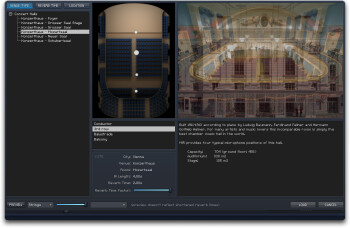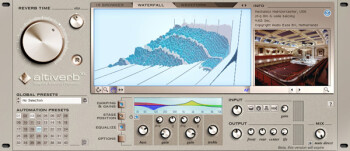In this tenth episode, we will tackle an effect that is seldom used by people starting out in mastering, namely, reverb.
While it isn’t necessary to use it every time — it’s actually pretty rare — it can nevertheless be incredibly effective in certain cases.
What is it for?
There are many opportunities to use reverb while mixing, so why add yet another layer in mastering? Well, there are several scenarios in which it might be useful, as we’ll see.
For starters, reverb is frequently used in mastering to recover a song cut short while exporting the mix. It is not uncommon to receive a mix that ends before the last note has completely died out. To correct that, a small amount of reverb at the end of the song can help you create a more natural ending. However, in a “Home Mastering” situation, you should be able to export your song again without any problems. If that’s the case, it’s always better to go back to the source and make sure that all notes have stopped sounding for good.
Reverb can also be used at this stage to give some sonic cohesion to your tracks. The idea is to trick the listener into thinking that the different sounds form a united whole and not different layers of instruments recorded at different times and maybe even different places. In this case, the reverb acts as a varnish layer that unifies different woods.
Finally, a small dose of reverb can make a mix gain some depth when it seems “glued” to the speakers.
Advice
We won’t go into how to set parameters on a reverb processor. To learn more about that, refer to a previous article.
As usual, the first rule is: Take it easy! Applying too much reverb in mastering can easily kill your mix, rendering it too hazy. As a consequence, the wet signal should never exceed 10%.
As for the type of reverb, it will depend on what you aim for. Favor convolution reverbs over simulation ones to get a realistic-sounding acoustic space. Algorithm reverbs are less adequate to gain depth.
In every case, you should always cut the lows of the reverb signal somewhere around 100 Hz or you’ll risk losing precision by drowning your bass guitar and kick drum.
More than ever, the reverb shouldn’t be heard, but rather felt. It should blend with the whole and yet its absence should be noticed when you bypass it. To achieve that, it is often useful to attenuate the reverb signal above 2.5 kHz.
To finish, regarding the size of the reverb, you should favor short reverbs. They are more discreet, which serves perfectly the objectives of mastering.
Tools of the trade
Just for a change, we will not finish this article with a list of plug-ins, since the market is flooded with reverbs of all types. Nevertheless, here you have a link that will take you to a list of the favorite reverbs of the AudioFanzine community and their description. That ought to give you some clues. And don’t forget to add your comments below so we can discuss the topic further!


